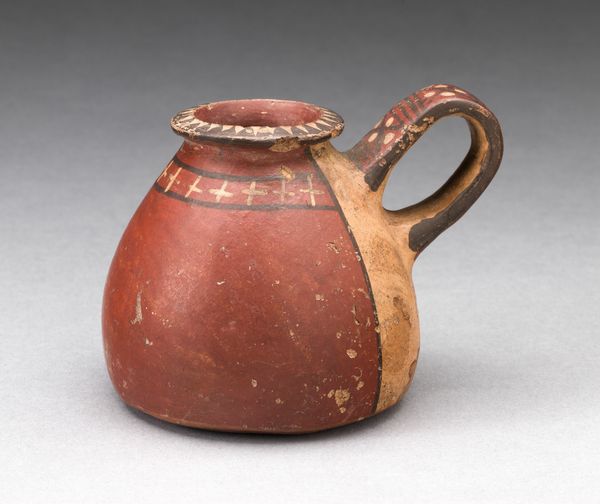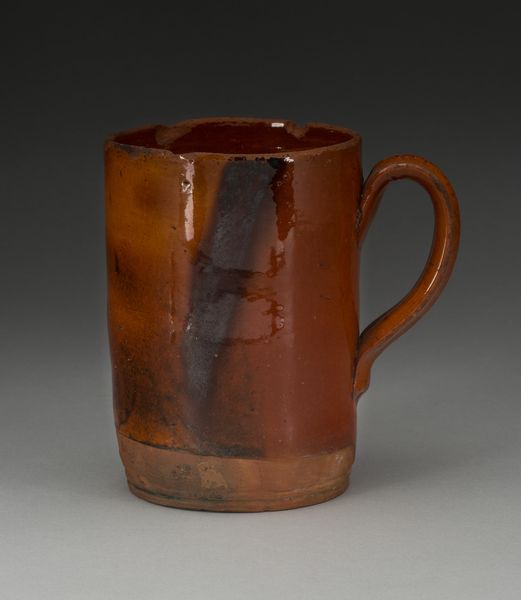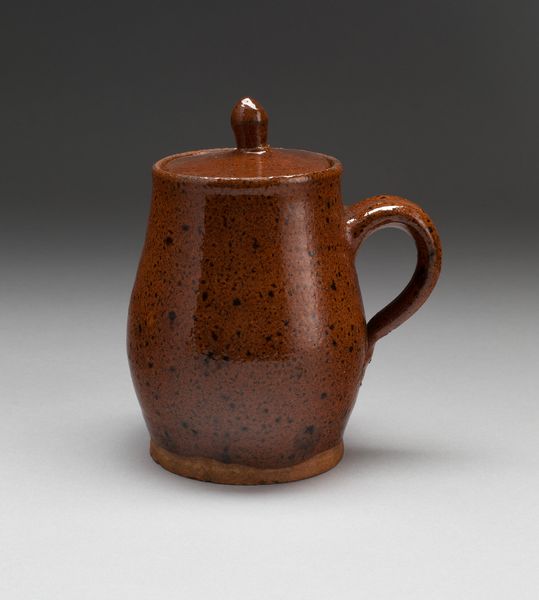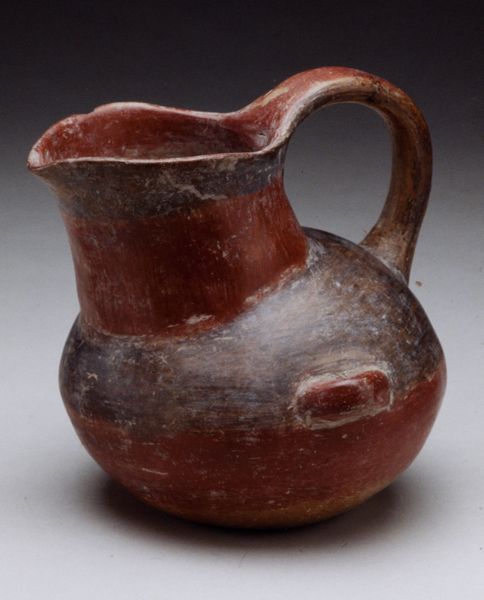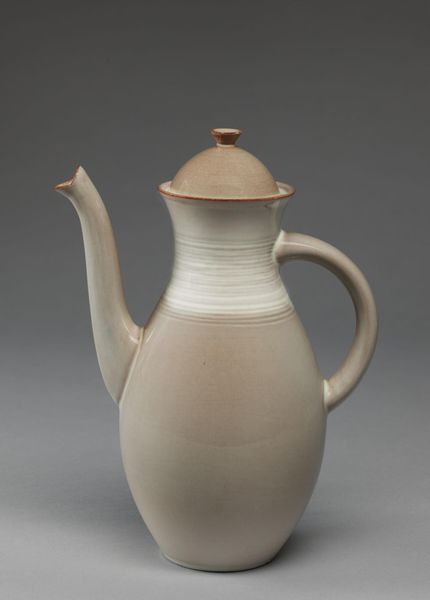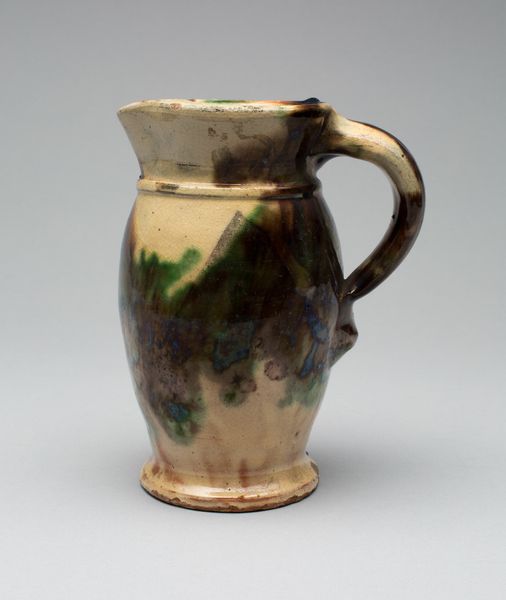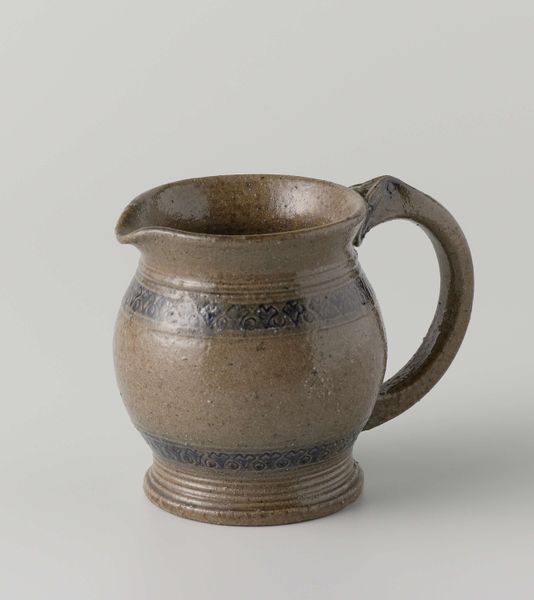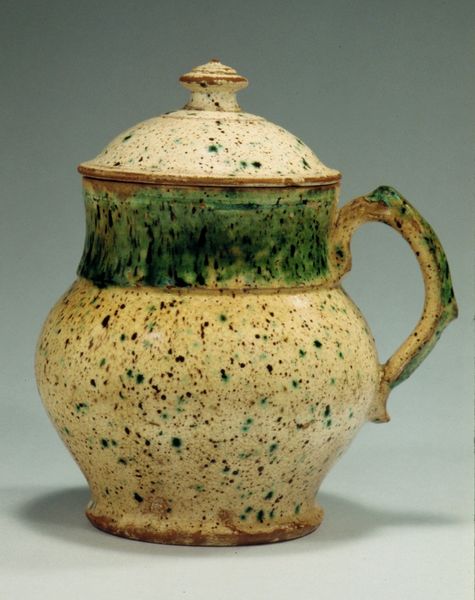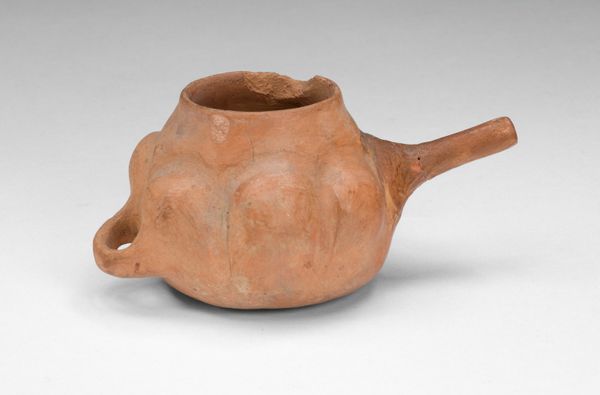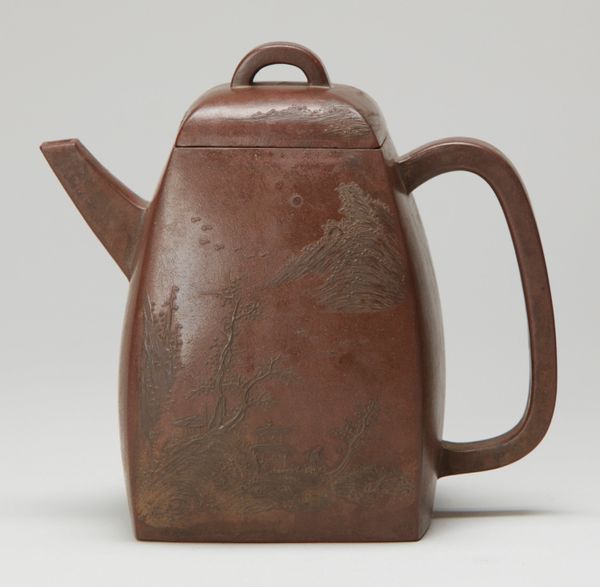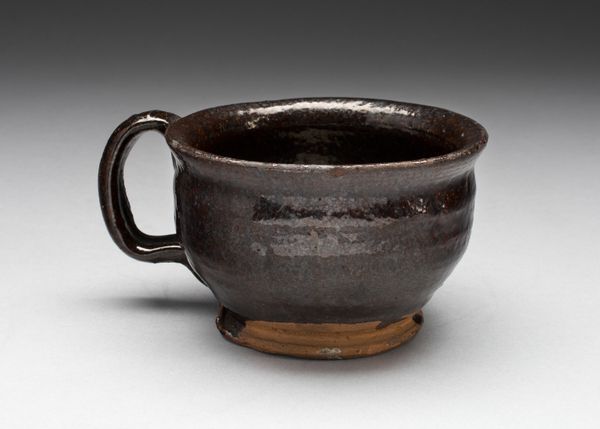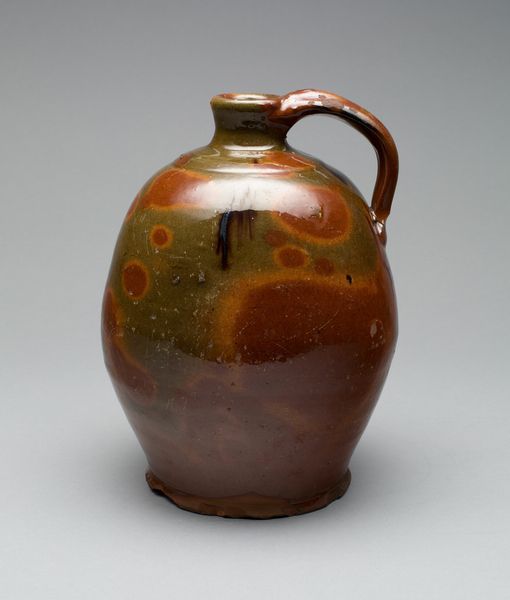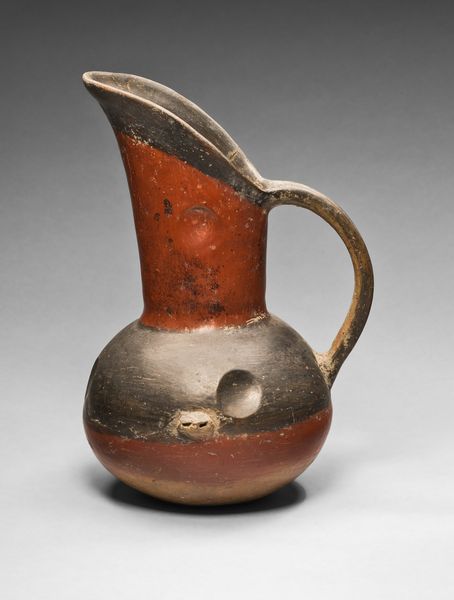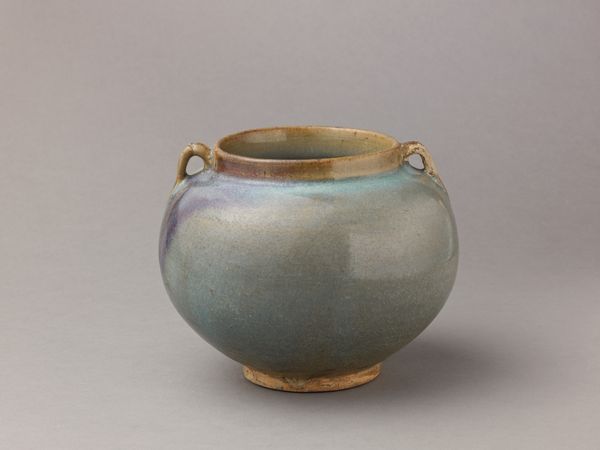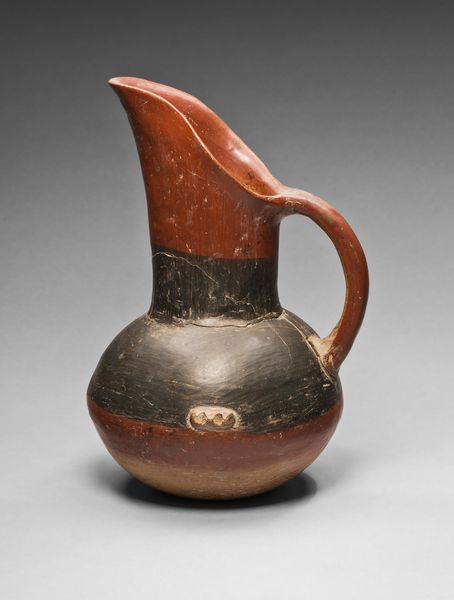
ceramic, earthenware
#
ceramic
#
earthenware
#
stoneware
#
ceramic
#
united-states
Copyright: No Known Copyright
Curator: Let’s consider this unassuming "Teapot," likely created in the United States around the 20th century, rendered in ceramic earthenware. Editor: My initial response is one of intrigued awkwardness. It has the rudimentary forms of a child's toy, a visual disharmony I find compelling. The vertical brown stripes against that hazy cream feel decidedly unrefined. Curator: Interesting. I’m immediately drawn to its compositional simplicity. The sharp angles juxtapose the soft, flowing glaze, especially where it drips near the spout. It's a conversation between intention and chance in the making process. Semiotically, we can think of the brown stripes against that pale backdrop almost acting as structural lines. Editor: Speaking of chance, does it strike you how the shape references utilitarian pottery of earlier eras, yet it rejects functionality through the crudeness of construction? Its lineage sits amidst industrial tableware and homespun folk art and this kind of tension seems rife in the craft tradition. Curator: Precisely. Consider also the squareness of the lid – a rigid geometry imposed on an otherwise organic form. It could serve as an interesting case study into what values were placed on "design." Editor: The visual language of function seems deployed to hint at certain cultural tropes in the contemporary ceramics market in America, wouldn't you agree? And look closely – there is wear that can offer insights on display, collecting, or daily use. Curator: Yes, there is clear intentionality at play in the materiality, contrasting highly stylized glazes of similar wares on the market, but with a more coarse presentation. Editor: The more I look at this piece, the more I think about the artist using design as a symbol, and I believe design acts a metaphor here. I wonder what an interrogation of the current craft markets could illuminate? Curator: Well, the very deliberate placement of these elements – the glaze, form, lines – creates a dynamic equilibrium. Editor: It is a vessel pregnant with contradictions of utility versus design—what is not to find intellectually stimulating in such work? Curator: It's fascinating how analyzing the form and material can open paths of intellectual explorations beyond just pure aesthetics. Editor: I am particularly keen on studying this "Teapot" with your comments on shape, semiotics and wear in mind—and understanding just what stories this curious little creation has to offer the cultural institution lucky enough to exhibit this.
Comments
No comments
Be the first to comment and join the conversation on the ultimate creative platform.
